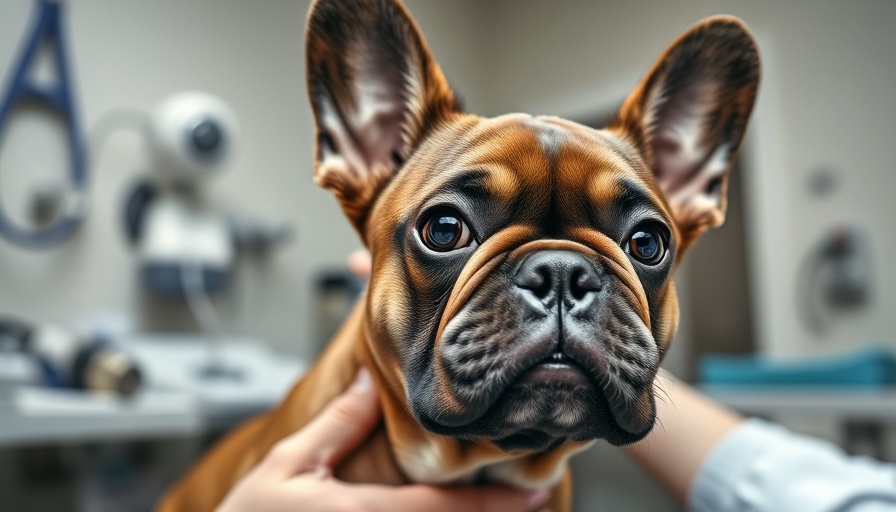
Understanding Bladder Stones in Dogs: A Critical Health Concern
Bladder stones, also known as uroliths or cystic calculi, are hard deposits of minerals that can form in a dog’s bladder, causing a range of health issues. These usually start as tiny crystals that grow into larger stones under the right conditions. Common culprits include urinary tract infections, dietary factors, and underlying health conditions such as Cushing’s disease. Pet parents should be aware that while some dogs may show no symptoms, bladder stones can lead to severe discomfort and even life-threatening conditions due to urinary obstruction.
Symptoms to Watch for: Is Your Dog at Risk?
It's crucial to recognize the symptoms of bladder stones early on to ensure prompt veterinary care. Common indicators include:
- Blood in urine (hematuria)
- Increased frequency of urination, which may include straining or difficulty
- Abnormal licking or leaking of urine
- Painful urination or complete inability to urinate
While dogs might exhibit a range of symptoms from mild discomfort to acute signs of distress, the degree of seriousness often varies by dog. Some may show signs of abdominal pain, lethargy, or increased thirst. If your dog shows any difficulty in urination, seek immediate veterinary assistance, as this can signify a blockage that may be life-threatening.
Diagnosis and Treatment of Bladder Stones
Veterinarians diagnose bladder stones through various methods, including physical examinations, urinalysis, blood tests, and imaging techniques such as X-rays or ultrasound. Treatment options depend on the type and size of the stones. Some smaller stones can be dissolved with specific dietary changes, while larger stones may require surgical removal. Additionally, urinary catheters or lithotripsy—where lasers break down stones—may be recommended. Following diagnosis, it is essential to adhere to your vet's treatment plan to prevent recurrence, which is common without ongoing management.
Preventing Bladder Stones: Proactive Measures
Prevention is ultimately key to avoiding bladder stones in dogs. Regular veterinary check-ups can help identify risk factors early. Encourage hydration by ensuring your dog has constant access to fresh water, and consider adding water to dry food or providing canned options. Monitoring your dog’s diet is also essential; consult with your vet about a balanced nutritional regimen that minimizes the risk of stone formation.
Pet owners should be aware that some dog breeds—such as Bulldogs, Dalmatians, and Miniature Schnauzers—are more predisposed to bladder stones. Therefore, breed-specific monitoring may be beneficial to ensure optimal urinary health.
Emotional Impact on Pet Parents
Seeing your canine companion in discomfort can be distressing. Staying informed about better prevention and treatment options empowers pet parents to advocate effectively for their furry friends’ health. Regular vet visits, along with attention to symptoms, can lead to early interventions, ensuring the well-being and longevity of your pet.
Frequently Asked Questions About Bladder Stones in Dogs
How serious are bladder stones in dogs?
While some dogs may not show symptoms at all, bladder stones can lead to significant pain and discomfort. If they obstruct urine flow, this situation becomes an emergency.
Can specific dog foods cause bladder stones?
Yes, diets high in protein, magnesium, and calcium can contribute to the development of bladder stones. Consulting with a veterinarian about proper diet is crucial.
What should I do if my dog shows symptoms of bladder stones?
Contact your veterinarian immediately. Early intervention is critical to manage your dog's health.
 Add Row
Add Row  Add
Add 



